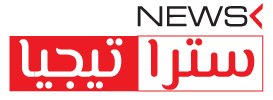U.S. pressure mounts on Hezbollah as regional dynamics shift

Department of Research, Studies and International News 16-04-2025
Efforts to compel Hezbollah to disarm are gaining momentum, largely driven by the United States and supported by certain Lebanese political factions. Following a devastating Israeli military campaign in Lebanon that resulted in the deaths of hundreds, including more than 200 children, and significantly weakened Hezbollah’s leadership, the group’s position has become increasingly vulnerable. This shift is further exacerbated by the collapse of a major ally, the Syrian regime led by Bashar al-Assad.
Washington’s stance has become more assertive. During an April 6 visit to Lebanon, Deputy U.S. Special Envoy to the Middle East Morgan Ortagus emphasized the necessity of disarming Hezbollah. Speaking to a Lebanese media outlet, Ortagus stated unequivocally that Israel will not tolerate armed attacks on its territory. In a separate interview, she likened Hezbollah to a malignancy that must be removed entirely, underscoring the urgency of halting the cash-based economic networks that allow the group to bypass the formal banking sector and evade U.S. sanctions.
Hezbollah currently faces one of the most precarious periods in its history since its formation during the Lebanese Civil War. Though unlikely to relinquish its arsenal without substantial concessions, it is under increasing pressure, both from foreign actors and within Lebanon, to comply. At the same time, Israeli attacks persist, often citing Hezbollah’s presence as justification. The group may find itself compelled to cooperate, especially as Lebanon seeks international aid for post-war reconstruction.
Despite the rising pressure, Hezbollah has not formally indicated a willingness to disarm. According to Lebanese political analyst Karim Safieddine, the group may consider disarmament, but only in exchange for significant political or strategic gains. A recent Reuters report suggested that a senior Hezbollah figure had floated the idea of disarmament if Israel withdraws from five disputed areas in southern Lebanon, claims later denied by Hezbollah’s media office.
Political commentator Qassem Kassir, known for his proximity to Hezbollah, reinforced the group’s position: while open to discussions about a national defense strategy, Hezbollah refuses to engage in talks specifically focused on disarmament as long as Israeli forces remain on Lebanese soil. Yet, he admitted that should Israel pull back, the group’s stance might evolve.
Hezbollah’s military capabilities have undeniably been diminished. The loss of key leaders and the closure of major weapons supply routes, particularly following Assad’s flight to Moscow, have substantially weakened the group. Although Hezbollah retains strong grassroots support in parts of southern Lebanon, the Lebanese Armed Forces now hold greater control in those regions. Still, many observers believe Hezbollah retains enough firepower to challenge any domestic rivals.
One Western diplomat, speaking anonymously, noted that while Hezbollah no longer poses a credible threat to Israel, it remains a formidable force within Lebanon. This persistent strength raises concerns that excessive pressure could provoke internal instability or even armed conflict. Nevertheless, experts like Kassir dismiss the likelihood of civil war, despite acknowledging the immense pressure on Hezbollah.
Hezbollah’s influence has clearly diminished from its peak, when it was the dominant political and military force in Lebanon. Its alliance with the Amal Movement once gave it broad control over the country’s Shia political landscape, even employing coercive tactics against opponents. But the tide appears to be turning.
Professor Hilal Khashan of the American University of Beirut described the current period as one of upheaval, with Hezbollah’s dominance clearly waning. Domestically, key figures such as President Joseph Aoun have called for the Lebanese state to be the sole authority over arms, indirectly signaling a challenge to Hezbollah. Aoun has emphasized dialogue as the preferred path to achieving this goal, a stance supported by French President Emmanuel Macron.
However, this cautious strategy is not universally accepted. Some Lebanese parties, such as the Christian-led Lebanese Forces (LF), are urging a firmer stance. LF leader Samir Geagea criticized the idea of national dialogue over disarmament, demanding a six-month deadline for Hezbollah to surrender its weapons. His deputy, Georges Adwan, went further by threatening to withdraw from Prime Minister Nawaf Salam’s cabinet unless stronger action is taken.
Despite these calls, analysts doubt the LF possesses sufficient political weight to influence Hezbollah’s course. As Safieddine noted, the party’s aggressive posture may serve more as a political statement than a practical strategy.
While Lebanon debates its future, the decisive pressure point appears to lie elsewhere, namely, in Washington. The U.S. and Iran, Hezbollah’s primary patron, are engaged in indirect negotiations, primarily focused on Iran’s nuclear program. Yet, many experts believe Hezbollah’s fate will also feature in these discussions.
Khashan argued that Hezbollah’s eventual disarmament will be the result of U.S. political leverage and Israeli military deterrence, not internal Lebanese dynamics. Still, he and others stress the importance of crafting an alternative social and political framework for Lebanon’s Shia population, one that makes them feel represented by the state rather than reliant on Hezbollah.
Safieddine warned that any attempt to disarm Hezbollah without first addressing the socioeconomic and sectarian divides that fuel its support would risk further destabilization. Yet, such nuanced approaches have often been overlooked by U.S. policymakers, who tend to focus on broader strategic objectives in the region.
Ultimately, while the conditions for Hezbollah’s disarmament may be more favorable than ever, lasting peace and stability in Lebanon will require more than just pressure, it will require inclusive governance and social reintegration.





